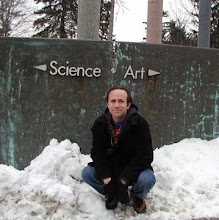A quick look at history, as seen through Habermas’s story of the emergence and suppression of the public sphere.
There is feudal civilization, where the lords “represent their power ‘before’ the people, instead of for the people.” (351)
At some point, this power structure cannot hold. Perhaps the population is too great, printing press makes information available, ideas of the Enlightenment start to spread – and that longstanding structure collapses.
In its wake, perhaps a true public sphere emerges. (Though we must note it only extends to men of a particular dominant class to begin with.) Habermas defines it thus: “By ‘the public sphere,’ we mean first of all a realm of our social life in which something approaching public opinion can be formed. Access is guaranteed to all citizens. A portion of the public sphere comes into being in every conversation in which private individuals assemble to form a public body.” (350) It came about through debate, and he writes, “The medium of this debate – public discussion – was unique and without historical precedent.” (352) Instrumental in fomenting this debate and thus the public were newspapers, which flourished: “Newspapers changed from mere institutions for the publication of news into bearers and leaders of public opinion – weapons of party politics.” “The press remained an institution of the public itself, effective in the manner of a mediator and intensifier of public discussion, no longer a mere organ for the spreading of news but not yet the medium of a consumer culture.” (353) The media was a medium of communication and education. Allowed for the creation of an informed public.
But then….
Private, commercial interests take hold. The newspapers are subverted by consumer culture. Big private interests outweigh what the larger public wants. The public sphere is retreating. We see the rise of what Mills calls the BIG 3: “With the interweaving of the public and private realm, not only do the political authorities assume certain functions in the sphere of commodity exchange and social labor, but conversely social powers now assume political functions. This leads to a kind of ‘refeudalization’ of the public sphere.” (354)
But this time around, the feudal state is more subtly organized. For, “… at the same time the large organizations must assure themselves of at least plebiscitary support from the mass of the population through an apparent display of openness.” (354) It’s a matter of “public relations” shaping public perceptions and creating the illusion of participatory democracy and freedom. Thus that brief twinkle of a true public sphere, however mythical it might actually have been, is snuffed before it has much chance to shine. Things are back to where they were, but the forms of control are more insidious. And maybe that’s how they’d have to be. It would seem, at a certain scale, the public simply can’t be oppressed – at least directly. People will revolt, form undergrounds, resist at all costs. But if that oppression is cloaked in the guise of freedom and the public is given other things to take their minds off of it, the forms of control can hold. This isn’t to suggest conspiratorial manipulation, just that that’s the sort of choices we’ve made or failed to make, or have had made for us. In the face of disaster, unbridled oppression, the people will rise. But how do we rise in the face of comfort? It’s a matter of civic responsibility, a core of education for democracy. And we have a long ways to go. – Nick

No comments:
Post a Comment